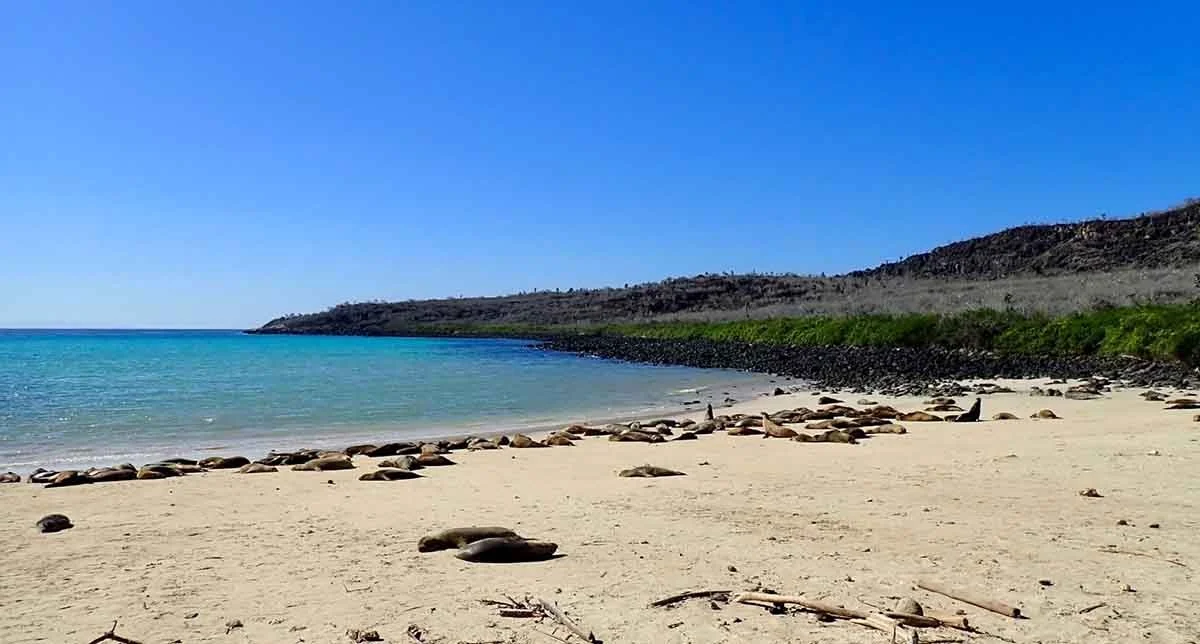Santa Fe Island, Galápagos: Land Iguanas, Opuntia Forests & Sea-Lion Snorkeling
Cruise destination dry landing access to see sea lions and iguanas
Santa Fe, also called Barrington Island, is located in the central part of the Galapagos archipelago. It is one of the oldest Galapagos Islands, ages of its lavas range from 750,000 to nearly 3 million years. The lavas are similar in some respects to the Platform Series lavas of neighboring Santa Cruz. Santa Fe is also one of the few islands that are not volcanically active. Its maximum elevation is only about 200 m. There have, however, been unconfirmed reports of fumaroles on the island.
The present island represents only a part of a larger volcanic edifice, the west coast is defined by a fault along which the western have of the volcano has been down-thrown. After the volcanic activity ended (and probably only recently in a geologic sense), Santa Fe has been cut by a series of east-west faults that have produced a series of horst and grabens. There is no fresh water on the island so it has been relatively undisturbed by human activity and feral animals. Among the unique species that can be seen, there are the Santa Fe land iguana and Galapagos snake (whose bite is mildly poisonous).

